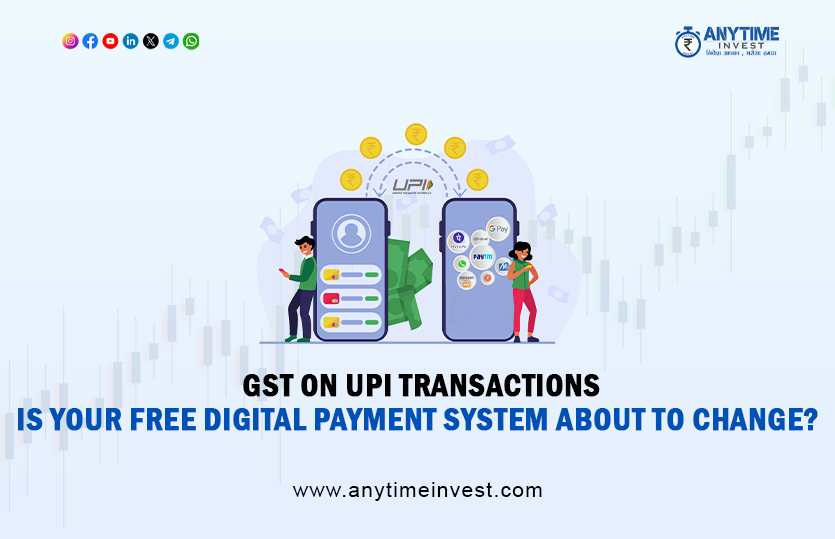
The digital revolution in India has been heavily driven by UPI—Unified Payments Interface—a payment system that has become as common as sending a text message. With just a few taps, you can transfer money, pay bills, and shop online without any cash in hand. But with the rise of digital transactions, there’s been growing curiosity and concern over GST on UPI transactions. Is this truly the end of “free” UPI? Or is it just another misunderstanding fueled by misinformation?
Let’s break it down in plain English.
In early 2023, news began circulating about possible charges being introduced for UPI transactions. Suddenly, headlines screamed that the government was planning to impose GST on UPI transactions, causing panic among users and merchants alike. But is that the whole story?
Short answer: not really.
The Indian government has consistently maintained that UPI services will remain free for users, and GST won’t be applied directly to personal UPI transfers. However, certain components of UPI infrastructure—like value-added services from payment gateways—can attract GST, especially in commercial transactions.
If you're unfamiliar, Goods and Services Tax (GST) is a type of indirect tax applied to the sale and provision of goods and services. It’s charged at every point of sale where value is added—meaning businesses usually bear the burden and pass it on to customers in product pricing.
When it comes to GST on UPI transactions, the key thing to understand is that the tax doesn’t apply to the transaction amount itself, but potentially to services used in facilitating that transaction.
Nope. If you’re paying your friend back for dinner or splitting rent with your roommate, there’s no GST involved in your UPI transfer. These are peer-to-peer (P2P) transactions, which are free and exempt from any charges or taxes.
Where things get tricky is in merchant-based UPI payments, especially when a payment gateway or third-party app is involved. These platforms may charge a service fee for the added features they offer—think of payment analytics, instant settlement, or branded checkout pages.
And GST on UPI transactions applies only to these services—not the actual money being transferred.
Primarily, it’s businesses that might have to worry. If a merchant uses a payment gateway or third-party UPI service provider, they may be charged a Merchant Discount Rate (MDR) or similar fee. And that service fee is subject to GST—usually at 18%.
For example, if a restaurant accepts UPI payments via a payment aggregator like Razorpay or PhonePe’s merchant dashboard, the platform might charge 1-2% on each transaction. This fee would include GST.
So again, GST on UPI transactions doesn’t apply to users, but to service charges that businesses incur.
A lot of it stems from poor communication and misleading headlines. When any tax-related update comes up, people assume it’s going to affect their wallets directly. But in the case of GST on UPI transactions, the impact is largely limited to service providers and commercial users.
Still, it’s worth staying informed—especially if you’re a small business or startup accepting digital payments.
The Indian Ministry of Finance has officially clarified that there is no plan to levy GST directly on UPI transactions for users. In fact, the government is focused on boosting digital payments, not discouraging them. Initiatives like zero MDR on UPI and RuPay transactions at banks still stand strong.
But third-party apps? That’s where things get a bit murky. Since these platforms offer additional, often premium, services, they’re allowed to charge fees—and GST on UPI transactions can quietly sneak in through these back channels.
For a small business trying to minimize costs, any additional fee—especially one with GST added—can eat into margins. While UPI remains cheaper than POS terminals or card payments, understanding where costs lie is important.
Business owners should:
This way, GST on UPI transactions won’t come as an unpleasant surprise.
The short answer: not for the average user.
As long as you’re using UPI for personal payments, you’re safe from GST. No extra charges, no hidden fees. But if you’re running a business and using advanced UPI features via third-party platforms, it’s wise to double-check what you’re being charged—and if GST on UPI transactions is being added in the fine print.
Unlikely, at least in the near future. The government's push is toward making digital payments more accessible, not taxed. However, as the ecosystem evolves and value-added services become more common, GST on UPI transactions in the commercial space could become more nuanced.
If anything, we might see more clarity and transparency in how these services are billed.
UPI has transformed the way India transacts—instant, easy, and (for the most part) free. The noise around GST on UPI transactions shouldn’t worry the average user, but businesses and service providers should be vigilant. GST isn’t being charged on your ₹500 dinner split, but the payment gateway your favorite food delivery app uses? That’s another story.
So, no—the sky isn’t falling. But if you’re a business, make sure you understand where and how GST on UPI transactions could touch your operations.
1. Is GST charged when I transfer money via UPI to a friend?
No. Peer-to-peer UPI transfers are not subject to GST.
2. Does every UPI payment attract GST?
Only business-related transactions involving service fees may attract GST, not personal payments.
3. Can third-party apps include GST in UPI services?
Yes, if they charge for value-added services, GST may be included in the fee.
4. Is the government planning to introduce GST on UPI for everyone?
No such move is currently in the works. Personal UPI payments remain GST-free.
5. How do I know if I’m being charged GST on UPI?
Check the detailed invoice or payment summary, especially if using UPI for business purposes.